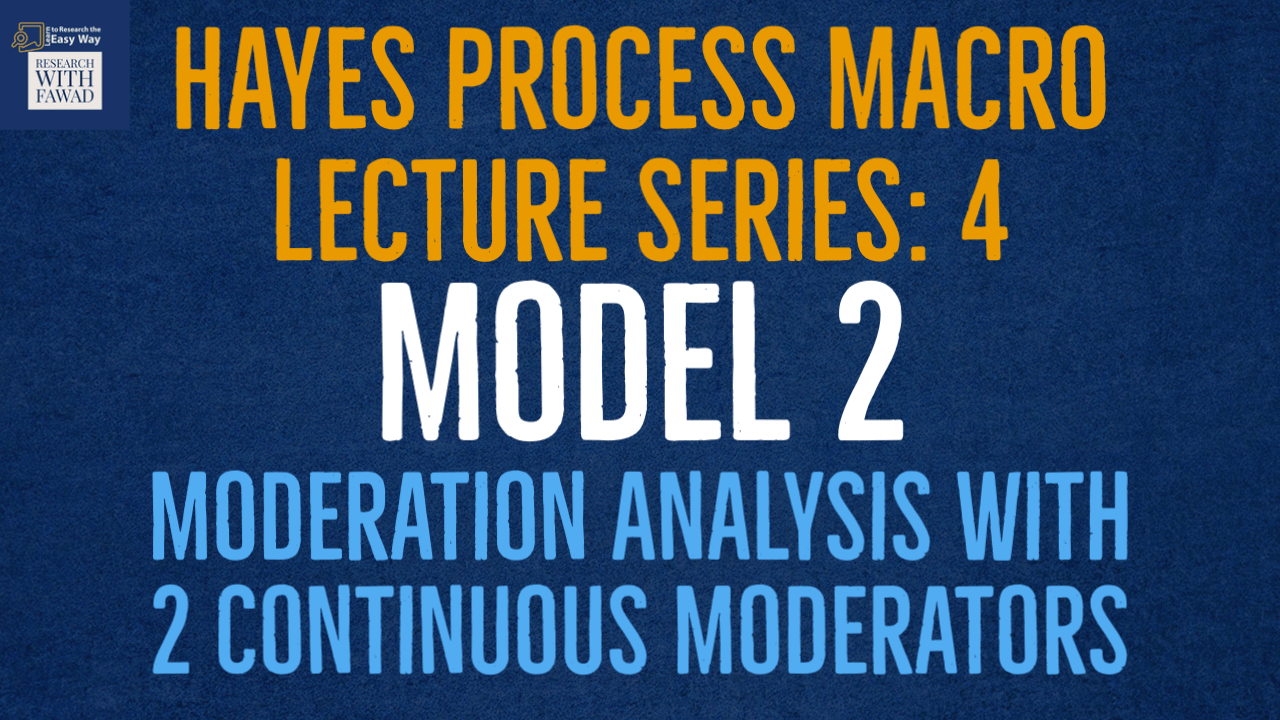
Hayes Process Macro - Lecture Series
The tutorial will guide on Model 2 of the Hayes Process Macro for Moderation Analysis using 2 Continuous Moderators, and Continuous Independent & Dependent Variables.

The tutorial will guide on Model 2 of the Hayes Process Macro for Moderation Analysis using 2 Continuous Moderators, and Continuous Independent & Dependent Variables.
Example